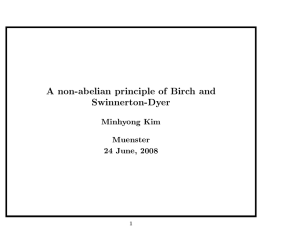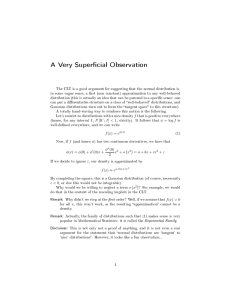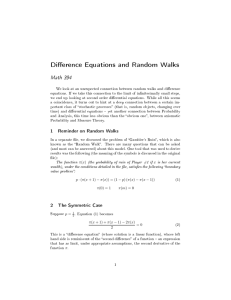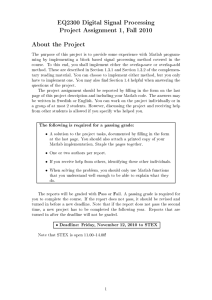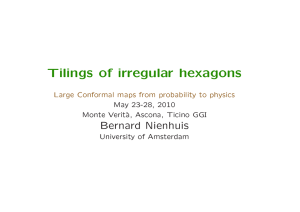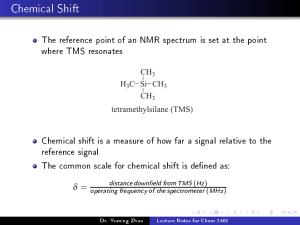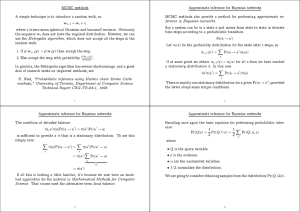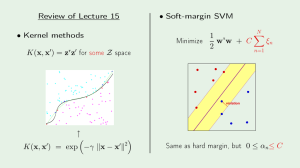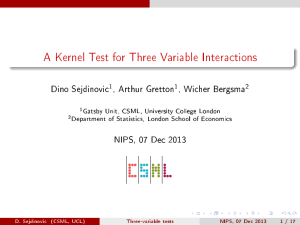е р щср ц я Ў г ьс ж Ў лсжсрьс
реклама
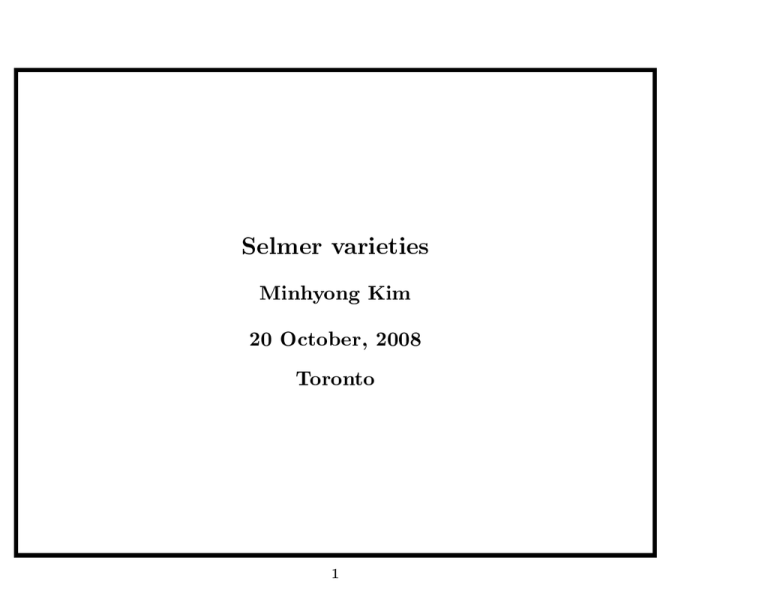
Selmer varieties Minhyong Kim 20 Otober, 2008 Toronto 1 I. General bakground (E; e) ellipti urve over Q . G := Gal(Q =Q ). The exat sequene n 0!E [n℄!E (Q ) ! E (Q )!0 of groups with G-ation leads to the Kummer exat sequene: n 1 0!E (Q )[n℄!E (Q ) ! E (Q ) ! H (G; E [n℄) In fat, the boundary map indues an injetion E (Q )=nE (Q ),!Hf1 (G; E [n℄); where the subsript f refers to a subgroup of Galois ohomology satisfying a olletion of loal onditions: A Selmer group. 2 Beause Hf1 (G; E [n℄) often admits an expliit desription, this inlusion is applied to the problem of determining the group E (Q ). Usually, we x a prime and run over its powers E (Q )=pn E (Q ),!Hf1 (G; E [pn ℄) leading to a onjetural isomorphism E (Q ) Z p ' Hf1 (G; Tp (E )) where Tp (E ) := lim E [pn ℄ is the p-adi Tate module of E . 3 When X=Q is a urve of genus g 2 and b 2 X (Q ), analogue of above onstrution 1 Z p )) X (Q ) ! Hf (G; H1et (X; uses the p-adi étale homology Z p ) := 1et;p (X; b)ab H1et (X; of X := X Spe(Q ) Spe(Q ). Several dierent desriptions of this map. 4 But in any ase, it fators through the Jaobian X (Q )!J (Q )!Hf1 (G; Tp J ) using the isomorphism Z p ) ' Tp J; H1et (X; where the rst map is the Albanese map x 7! [x℄ [b℄ and the seond is again provided Kummer theory on the abelian variety J . Consequently, diult to disentangle X (Q ) from J (Q ). 5 The theory of Selmer varieties renes this to a tower: Hf1 (G; U4 ) - ? Hf1 (G; U3 ) ? - Hf1(G; U2) ? - 1 3 4 - .. . .. . X (Q ) 2 1 Hf (G; U1 )= Hf1 (G; Tp J Q p ) where the system fUn g is the Q p -unipotent étale fundamental group b) of X . 1u;Q (X; p 6 Brief remarks on the onstrutions. 1. The étale site of X denes a ategory Q p) Un(X; of loally onstant unipotent Q p -sheaves on X . A sheaf V is unipotent if it an be onstruted using suessive extensions by the onstant sheaf [Q p ℄X . 2. We have a ber funtor Q p )!VetQ Fb : Un(X; p that assoiates to a sheaf V its stalk Vb . Then U := Aut (Fb ); the tensor-ompatible automorphisms of the funtor. U is a pro-algebrai pro-unipotent group over Q p . 7 3. U = U1 U2 U3 is the desending entral series of U , and Un = U n+1 nU are the assoiated quotients. There is an identiation Q p ) = V := Tp J Q p U1 = H1et (X; at the bottom level and exat sequenes 0!U n+1 nU n !Un !Un 1 !0 for eah n. For example, for n = 2, ^ 0